#king henry iii of france
Explore tagged Tumblr posts
Text
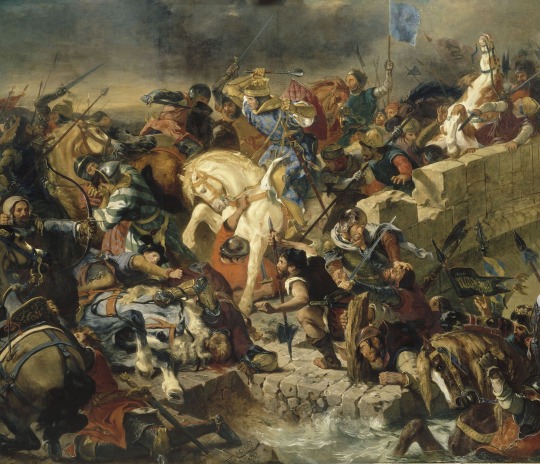
The Battle of Taillebourg, 21 July 1242 by Eugène Delacroix
#battle of taillebourg#art#eugène delacroix#middle ages#medieval#history#knights#france#louis ix#saint louis#french#europe#saintonge war#saintes#versailles#capetian#angevin#england#english#bridge#henry iii#charente#river#kingdom of france#kingdom of england#alphonse of poitiers#hugh x of lusignan#richard of cornwall#mace#king
131 notes
·
View notes
Text

Coronation of Henry III by Frances Brundage.
The son of King John and Isabella of Angoulême, Henry assumed the throne when he was only nine in the middle of the First Barons' War.
#frances brundage#kingdom of england#henry iii#king of england#full length portrait#lord of ireland#duke of aquitaine#hanry of winchester#first barons' war#House of Plantagenet
2 notes
·
View notes
Text
Claude de Valois, Duchess of Lorraine
Claude of France, Duchess of Lorraine by Francois Clouet With Claude de Valois, we have a unique example of a happy aristocratic marriage. Having grown up together at the French court, the couple knew each other and were compatible. A favorite of her mother, Queen Catherine de’Medici, the many years of childbirth took a harsh toll on her body. Claude was born at the palace of Fontainebleau on…

View On WordPress
#Catherine de’Medici#Charles IX#Claude of France#Duchess of Lorraine#French history#Henri II#Henri III#Huguenots#King of France#Queen of France#Reformation#Renaissance#St. Bartholomew’s Day Massacre#Wars of Religion
4 notes
·
View notes
Text
Loyal brothers
The Capetian kings found their brothers no more difficult than their sons. The exceptions were the brothers of Henri I, Robert and Eudes, but thereafter the younger Capetians developed a tradition of loyalty to their elders. Robert of Dreux, the brother of Louis VII, who was the focus of a feudal revolt in 1149, was only a partial exception, for at that date the king was still in the East, and the real object of the hostility was the regent Suger. By contrast, Hugh of Vermandois was described by contemporaries as the coadjutor of his brother, Philip I. St Louis's brothers, Robert of Artois, Alphonse of Poitiers, and Charles of Anjou, never caused him any difficulties, and the same can be said of Peter of Alençon and Robert of Clermont in the reign of their brother Philip III. Even the disturbing Charles of Valois, with his designs on the crowns of Aragon and Constantinople, was always a faithful servant to his brother Philip the Fair, and to the latter's sons. The declaration which he made when on the point of invading Italy in the service of the Pope is revealing:
"As we propose to go to the aid of the Church of Rome and of our dear lord, the mighty prince Charles, by the grace of God King of Sicily, be it known to all men that, as soon as the necessities of the same Church and King shall be, with God's help, in such state that we may with safety leave them, we shall then return to our most dear lord and brother Philip, by the grace of God King of France, should he have need of us. And we promise loyally and in all good faith that we shall not undertake any expedition to Constantinople, unless it be at the desire and with the advice of our dear lord and brother. And should it happen that our dear lord and brother should go to war, or that he should have need of us for the service of his kingdom, we promise that we shall came to him, at his command, as speedily as may be possible, and in all fitting state, to do his will. In witness of which we have given these letters under our seal. Written at Saint-Ouen lès Saint-Denis, in the year of Grace one thousand and three hundred, on the Wednesday after Candlemas."
This absence of such sombre family tragedies as Shakespeare immortalised had a real importance. In a society always prone to anarchy the monarchy stood for a principle of order, even whilst its material and moral resources were still only slowly developing. Respectability and order in the royal family were prerequisites, if the dynasty was to establish itself securely.
Robert Fawtier - The Capetian Kings of France
#xii#xiii#xiv#robert fawtier#the capetian kings of france#henri i#robert i de bourgogne#louis vii#robert i de dreux#abbé suger#philippe i#hugues de vermandois#louis ix#robert i d'artois#alphonse de poitiers#charles i d'anjou#philippe iii#pierre d'alençon#robert de clermont#philippe iv#charles de valois
8 notes
·
View notes
Text


Head of a partisan from the guard of King Henry III of France, dated 1588.
from The Worcester Art Museum
6K notes
·
View notes
Text

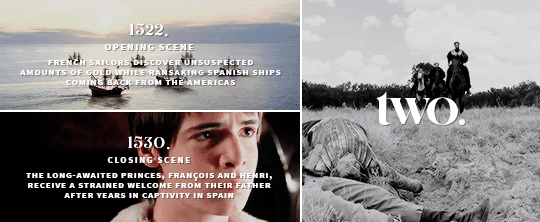

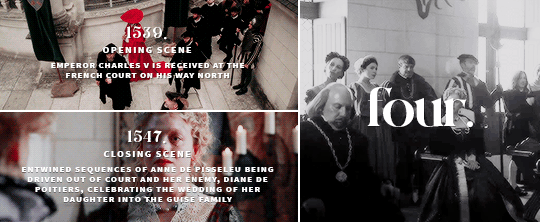
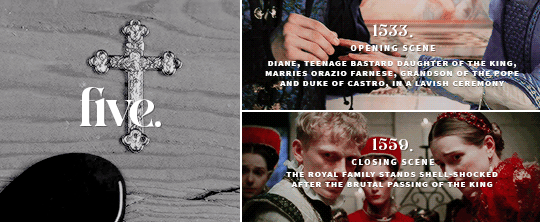
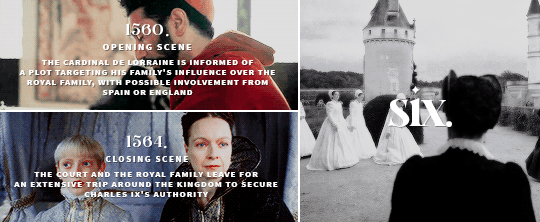

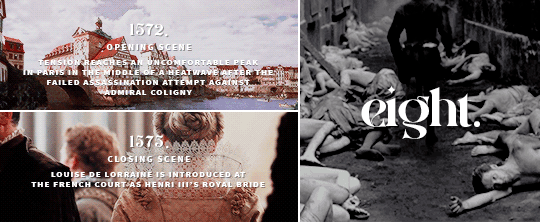
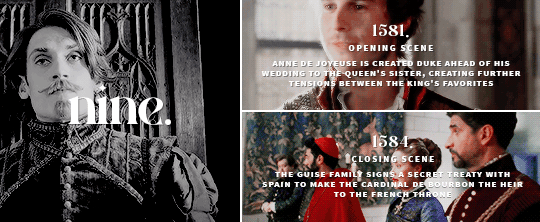


K I N G S I D E, a tale of seven kings
first season 1514-1520. Claude and François finally get married, a vacant seat for Mary Tudor, Louise of Savoy's stubborness to keep her son in check. A new King arises, the New Order, François' quest for glory in Italy. Another crown, another campaign.
second season 1522-1530. The inheritance dispute that leads Bourbon to treason. The pursuit of the italian dream, Claude dies, all is lost in Pavia. Süleyman and the unthinkable alliance, captivity in Spain. The Ottoman fleet. Royal depression. The inheritance dispute that led Bourbon to treason. The ladies' peace, Henry VIII flinching, a price for two princes, a New wife for the King.
third season 1531-1537. Louise dies, tensions between François and Marguerite. The wedding of Catherine and Henri. The rise of Pisseleu, the battle at Court between Charles and Henri and their people. War between Diane and Montmorency. Placards and the anti-heterics frenzy, another war in Italy. Wedding and death of Madeleine.
fourth season 1539-1547. Mending tensions between France and Spain. A very stubborn niece. All eyes on Henri and Catherine's sterile womb. Death of Charles. The duel in Jarnac. The King is dead, long live. Diane de Poitier's absolute triumph over Anne de Pisseleu. The Guises make their move.
fifth season 1553-1559. Diane of France's not so typical royal wedding. Catherine giving birth to the twins, Chenonceau goes to Diane, the cordial hate between the two. Rohan VS Nemours. Montmorency mess and a remarriage for Diane of France. The death of Henri, everything falls down.
sixth season 1560-1564. François II barely hanging on, Catherine's almost giving up, Elisabeth married off, the Guise family's counterpower, Montemorency's political exile, the Amboise conspiracy, preparations for the grand tour.
seventh season 1565-1572. The end of the grand tour, encounter between the royal family and Elisabeth, queen of Spain. The rise of Charles IX, a new queen, Marie Touchet and her bastard boys. Catherine's plans to get a match for Marguerite. Rising tensions between Charles and Henri after Jarnac and Montcontour. Marguerite's nuptials amidst tensions and Coligny's attempted murder.
eighth season 1572-1575. Coligny and the Protestant leaders rallying the troops. The Saint Barthelemew Massacre and the promise of Marguerite to never forgive her family. Catherine finds out Anjou's possible involvement. A new king for Poland. Marguerite's toubled married life. Death of Charles IX. Henri's escape from Poland and slow return to France.
nineth season 1581-1584. Catherine's illusions shatter. New King, no heir. Marguerite returns to Paris. Louise shows some spine against the King's favorites. Quarelling with Anjou, tensions with Elizabethan England, Anjou's election and subsequent death and Catherine's anger. The Guise family veering off the road.
tenth season 1585-1589. The mounting war of the three Henris. All eyes on King Henri who has no sons, Catherine's political exile, the slow burning of the last Valois children. Hunting down Marguerite from stronghold to stronghold, ending with her house arrest in Usson. Assassination of the Guise brothers, the death of Catherine, Henri III breaks down in Diane's arms. Marguerite in exile, Diane the only "true" daughter of Catherine's, as she sets out to (successfully) pacify the kingdom on her own.
#historyedit#perioddramaedit#mine#*#*kingside#16th century#so yeah this took me a whole month instead of a good week#we love crappy laptops
197 notes
·
View notes
Text
it’s actually a miracle that no one has ever written a French Wars of Religion jegulus au fic.
hear me out, hear me out;
It’s the 1500’s. The French monarchy is desperately trying to keep themselves and the Catholic Church superior to the Protestant faith, specifically the Huguenots. King Henry II of France (Orion) dies unexpectedly, leaving the throne to an eleven year old Henry III (Regulus), after the death of his brother. Too young to take the throne, Catherine de Medici (Walburga) takes over the throne and commits a LOT of violent crimes. The other brother, the Duke of Aleçnon (Sirius) abandons the whole monarchy and joins a group of Protestant Rebels called The Malcontents (tell me that isn’t the closest thing to Marauders you have EVER HEARD). Part of this group is Henry of Navarre (James) a protestant aristocrat attempting to take the throne and promote religious freedom. They call him the Good King Henry (something that SCREAMS James Potter).
#ap european history made me want to write fanfiction#marauders headcanon#marauders#regulus black#james potter#sirius black#wolfstar#jegulus#jegulus au#french aristocracy#wars of religion#ap euro
142 notes
·
View notes
Photo

The Hundred Years' War was fought intermittently between England and France from 1337 to 1453 CE and the conflict had many consequences, both immediate and long-lasting. Besides the obvious death and destruction that many of the battles visited upon soldiers and civilians alike, the war made England virtually bankrupt and left the victorious French Crown in total control of all of France except Calais. Kings would come and go but for many of them, one significant measure of the success of their reign was their performance in the Hundred Years' War. Divisions were created within the nobilities of both countries which had repercussions for who became the next ruling monarch. Trade was badly affected and peasants were incessantly taxed, which caused several major rebellions, but there were more positive developments such as the creation of more competent and regularised tax offices and the trend towards more professional diplomacy in international relations. The war also produced enduring and iconic national heroes, notably Henry V of England (r. 1413-1422 CE) and Joan of Arc (1412-1431 CE) in France. Finally, such a long conflict against a clearly identifiable enemy resulted in both participants forging a much greater sense of nationhood. Even today, a rivalry still continues between these two neighbouring countries, now, fortunately, largely expressed within the confines of international sporting events. Another consequence of the military successes was the revival of medieval chivalry, especially by Edward III who, along with his son Edward the Black Prince (1330-1376 CE), founded the exclusive chivalric Order of the Garter c. 1348 CE which still survives today. Saint George, the patron of the order, was now firmly established as a national saint of a confident country finally on equal military terms with the French. By the end of the war, England became wholly separated from the affairs of the Continent and was already moving towards a more 'English' cultural identity where the English language was spoken at court and used in official documents, and where customs and the view of the world were now firmly part of an island outlook. France, meanwhile, was richer and more powerful than ever before and ready to expand its interests on the Continent, notably in Italy. Finally, the war created enduring national heroes who continue to be celebrated today in popular culture. In England, Henry V became a legend in his own lifetime after his stunning victory at the 1415 CE Battle of Agincourt against enormous odds and, thanks to writers such as William Shakespeare (1564-1616 CE), his star has risen only ever higher as Henry V continues to be performed, filmed, and quoted. In France, Joan of Arc became the great figure of the conflict as her heavenly visions inspired her to lift the siege of Orleans in 1429 CE, turning the tide of the war. Joan was burnt at the stake as a witch but, made a saint in 1920 CE, she still today symbolises defiance against the odds and French patriotism. Both countries, then, have created a mythology of the Hundred Years' War, a now long-past time where the enemy was clear, the heroes were virtuous and the victories golden.
37 notes
·
View notes
Text
Below the cut I have made a list of each English and British monarch, the age of their mothers at their births, and which number pregnancy they were the result of. Particularly before the early modern era, the perception of Queens and childbearing is quite skewed, which prompted me to make this list. I started with William I as the Anglo-Saxon kings didn’t have enough information for this list.
House of Normandy
William I (b. c.1028)
Son of Herleva (b. c.1003)
First pregnancy.
Approx age 25 at birth.
William II (b. c.1057/60)
Son of Matilda of Flanders (b. c.1031)
Third pregnancy at minimum, although exact birth order is unclear.
Approx age 26/29 at birth.
Henry I (b. c.1068)
Son of Matilda of Flanders (b. c.1031)
Fourth pregnancy at minimum, more likely eighth or ninth, although exact birth order is unclear.
Approx age 37 at birth.
Matilda (b. 7 Feb 1102)
Daughter of Matilda of Scotland (b. c.1080)
First pregnancy, possibly second.
Approx age 22 at birth.
Stephen (b. c.1092/6)
Son of Adela of Normandy (b. c.1067)
Fifth pregnancy, although exact birth order is uncertain.
Approx age 25/29 at birth.
Henry II (b. 5 Mar 1133)
Son of Empress Matilda (b. 7 Feb 1102)
First pregnancy.
Age 31 at birth.
Richard I (b. 8 Sep 1157)
Son of Eleanor of Aquitaine (b. c.1122)
Sixth pregnancy.
Approx age 35 at birth.
John (b. 24 Dec 1166)
Son of Eleanor of Aquitaine (b. c.1122)
Tenth pregnancy.
Approx age 44 at birth.
House of Plantagenet
Henry III (b. 1 Oct 1207)
Son of Isabella of Angoulême (b. c.1186/88)
First pregnancy.
Approx age 19/21 at birth.
Edward I (b. 17 Jun 1239)
Son of Eleanor of Provence (b. c.1223)
First pregnancy.
Age approx 16 at birth.
Edward II (b. 25 Apr 1284)
Son of Eleanor of Castile (b. c.1241)
Sixteenth pregnancy.
Approx age 43 at birth.
Edward III (b. 13 Nov 1312)
Son of Isabella of France (b. c.1295)
First pregnancy.
Approx age 17 at birth.
Richard II (b. 6 Jan 1367)
Son of Joan of Kent (b. 29 Sep 1326/7)
Seventh pregnancy.
Approx age 39/40 at birth.
House of Lancaster
Henry IV (b. c.Apr 1367)
Son of Blanche of Lancaster (b. 25 Mar 1342)
Sixth pregnancy.
Approx age 25 at birth.
Henry V (b. 16 Sep 1386)
Son of Mary de Bohun (b. c.1369/70)
First pregnancy.
Approx age 16/17 at birth.
Henry VI (b. 6 Dec 1421)
Son of Catherine of Valois (b. 27 Oct 1401)
First pregnancy.
Age 20 at birth.
House of York
Edward IV (b. 28 Apr 1442)
Son of Cecily Neville (b. 3 May 1415)
Third pregnancy.
Age 26 at birth.
Edward V (b. 2 Nov 1470)
Son of Elizabeth Woodville (b. c.1437)
Sixth pregnancy.
Approx age 33 at birth.
Richard III (b. 2 Oct 1452)
Son of Cecily Neville (b. 3 May 1415)
Eleventh pregnancy.
Age 37 at birth.
House of Tudor
Henry VII (b. 28 Jan 1457)
Son of Margaret Beaufort (b. 31 May 1443)
First pregnancy.
Age 13 at birth.
Henry VIII (b. 28 Jun 1491)
Son of Elizabeth of York (b. 11 Feb 1466)
Third pregnancy.
Age 25 at birth.
Edward VI (b. 12 Oct 1537)
Son of Jane Seymour (b. c.1509)
First pregnancy.
Approx age 28 at birth.
Jane (b. c.1537)
Daughter of Frances Brandon (b. 16 Jul 1517)
Third pregnancy.
Approx age 20 at birth.
Mary I (b. 18 Feb 1516)
Daughter of Catherine of Aragon (b. 16 Dec 1485)
Fifth pregnancy.
Age 30 at birth.
Elizabeth I (b. 7 Sep 1533)
Daughter of Anne Boleyn (b. c.1501/7)
First pregnancy.
Approx age 26/32 at birth.
House of Stuart
James I (b. 19 Jun 1566)
Son of Mary I of Scotland (b. 8 Dec 1542)
First pregnancy.
Age 23 at birth.
Charles I (b. 19 Nov 1600)
Son of Anne of Denmark (b. 12 Dec 1574)
Fifth pregnancy.
Age 25 at birth.
Charles II (b. 29 May 1630)
Son of Henrietta Maria of France (b. 25 Nov 1609)
Second pregnancy.
Age 20 at birth.
James II (14 Oct 1633)
Son of Henrietta Maria of France (b. 25 Nov 1609)
Fourth pregnancy.
Age 23 at birth.
William III (b. 4 Nov 1650)
Son of Mary, Princess Royal (b. 4 Nov 1631)
Second pregnancy.
Age 19 at birth.
Mary II (b. 30 Apr 1662)
Daughter of Anne Hyde (b. 12 Mar 1637)
Second pregnancy.
Age 25 at birth.
Anne (b. 6 Feb 1665)
Daughter of Anne Hyde (b. 12 Mar 1637)
Fourth pregnancy.
Age 27 at birth.
House of Hanover
George I (b. 28 May 1660)
Son of Sophia of the Palatinate (b. 14 Oct 1630)
First pregnancy.
Age 30 at birth.
George II (b. 9 Nov 1683)
Son of Sophia Dorothea of Celle (b. 15 Sep 1666)
First pregnancy.
Age 17 at birth.
George III (b. 4 Jun 1738)
Son of Augusta of Saxe-Gotha (b. 30 Nov 1719)
Second pregnancy.
Age 18 at birth.
George IV (b. 12 Aug 1762)
Son of Charlotte of Mecklenburg-Strelitz (b. 19 May 1744)
First pregnancy.
Age 18 at birth.
William IV (b. 21 Aug 1765)
Son of Charlotte of Mecklenburg-Strelitz (b. 19 May 1744)
Third pregnancy.
Age 21 at birth.
Victoria (b. 24 May 1819)
Daughter of Victoria of Saxe-Coburg-Saafield (b. 17 Aug 1786)
Third pregnancy.
Age 32 at birth.
Edward VII (b. 9 Nov 1841)
Daughter of Victoria of the United Kingdom (b. 24 May 1819)
Second pregnancy.
Age 22 at birth.
House of Windsor
George V (b. 3 Jun 1865)
Son of Alexandra of Denmark (b. 1 Dec 1844)
Second pregnancy.
Age 20 at birth.
Edward VIII (b. 23 Jun 1894)
Son of Mary of Teck (b. 26 May 1867)
First pregnancy.
Age 27 at birth.
George VI (b. 14 Dec 1895)
Son of Mary of Teck (b. 26 May 1867)
Second pregnancy.
Age 28 at birth.
Elizabeth II (b. 21 Apr 1926)
Daughter of Elizabeth Bowes-Lyon (b. 4 Aug 1900)
First pregnancy.
Age 25 at birth.
Charles III (b. 14 Nov 1948)
Son of Elizabeth II of the United Kingdom (b. 21 Apr 1926)
First pregnancy.
Age 22 at birth.
378 notes
·
View notes
Note
Sorry if that's already been asked but what do you think about the "King's word is the law" in hotd/dance discourse? I'm not sure where that even came from and for me there is 0 evidence that suggests it's true
Hi anon, excellent question! Sorry it took me so long to reply, this got a bit long! This is actually something that comes up a lot when I teach feudalism to my high school students. I've found that most people in general do not know the difference between feudalism and absolutism, and conceive of all kingship as a form of tyranny. And compared to most modern systems of government, of course feudalism and absolutism are both oppressive and restrictive, so the difference can feel a bit like splitting hairs. Neither system gives the the common people any real voice, but the difference is that feudalism is a system with a relatively weak monarchy that has to, both directly and indirectly, answer to both the church and to his vassals. But Westeros, even under the Targaryens, even with the dragons, is not, strictly peaking, an absolute monarchy but rather a feudal monarchy.
Broadly speaking, in a feudal system "the king's word is law" is only true insofar as the king can enforce that law, and to enforce his laws he needs the support of his vassals, the landholders who supply him with his armies and revenues. The feudal relationship between the king and his vassals looks roughly like this (this is the actual diagram we use in my world history curriculum):
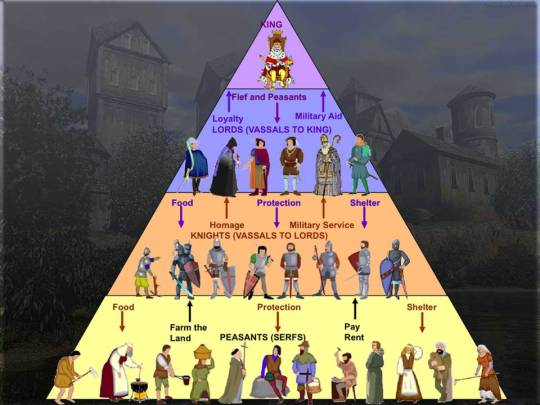
Notice how the relationships are all reciprocal? The king might technically own all the land in the realm, but he has no standing army of his own. Knights pledge their service to the lords, rather than the king (he will have some knights in his personal service too, but not nearly enough to make war). It is in the king's best interest to keep his vassals happy. He needs them! They help him keep other unruly vassals in check, help defend against foreign invasion, and help him wage his own wars of expansion. They also provide the crown with revenue in the form of taxes, and their farmlands are what provide food for the people of the realm. In Westeros in particular, the royal family does not hold much land of its own (the land held by the royal family is called the royal demesne and the Targaryen royal demesne is very small compared to that of irl kings), so it's particularly dependent on the support of the vassalage. This makes it a relatively weak feudal monarchy, all things considered.
(also, notice the bishop up there with the lords? Usually, he would usually be appointed by the king with the approval of the pope, but the question of whether or not church officials were subjects of the king and subject to the king's laws was a huge point of contention hat caused many power struggles in medieval monarchies, and there was a whole separate court system, the ecclesiastical court, to deal with the crimes of court officials)
Anyway, a feudal king who just does whatever he wants without regard for his vassals will quickly find himself being named a tyrant, and the accusation of tyranny is a serious one in a feudal system, because vassals will rebel rather than serve a tyrant. Rebellions were not usually done with the goal of overthrowing the king completely, they were done in order to pressure the king into listening to their demands. We saw this happen with King John, whose barons were unhappy for a number of reasons including what they saw as avaricious economic policies, costly wars with France, increased royal interference in local administration of justice, and conflicts between the king and the church. Eventually, John's barons pressured him into signing the Magna Carta, a document that specifically limited the power of the king and stated outright that the king was not above the law and that the king could not impose new laws without the consent of the lords. John later repudiated this document, which led to further rebellions, and his son and heir Henry III had to reaffirm it after his death (and a series of rebellions still plagued Henry III). Eventually, this leads to a formalization of the idea that the king must not act without the consent of his lords and the creation of parliament.
Now, we never see a Westerosi Magna Carta or the creation of a set parliament, there is the small council and the occasional great council, and lords can and do object to the king's laws, force concessions, and remove kings. Notably, Robert's rebellion in the main series is an example of vassals losing faith in their king and eventually removing him. Aegon V cannot push his reforms through because he lacks the support of the lords, and in his desperation tries to bring back the dragons. But if we look back, even dragonriding Targaryens could not simply impose their will without the cooperation of the realm's lords. Aenys was considered weak and his rule was beset by rebellions, eventually coming to a head when he arranged an incestuous marriage for his heir, this after the Faith was already displeased with his brother's polygamous marriage. This led to Aenys being known as known as King Abomination and the Faith Militant uprising forced him to flee to Dragonstone. Maegor, who followed him, is ousted (and killed) as a tyrant for going further than that, suppressing the faith and committing kinslaying against his nephew. What makes Jaehaerys' rule notable and successful is that he's very good at appeasing the lords and when he is going to do something controversial, like the Doctrine of Exceptionalism or changing the succession, he campaigns and politicks for their support (I maintain that he knew Viserys being picked at the council was a forgone conclusion, but he did not want to unilaterally go against Andal custom without consulting his lords, it's a CYA move). This is something Viserys completely fails to do, not only failing to drum up support for his unconventional choice of heir, but actively alienating potential supporters.
It's worth keeping in mind that "law" means something different in this context than what many of us are used to today. Medieval law, and Westerosi law, was a hodgepodge of custom, statute, and precedent. Westeros, like England, operates on "common law." Successions are disputed all the time because competing claims exist. If Viserys named Mushroom heir, is his word law? What if he names Helaena? Jace? And in a normal situation, if it wasn't the succession of the throne in question the rival claimants would present their petitions, citing evidence and precedent, and the master of law, magistrate, or the king would make a ruling. The will of the lords is especially required to enforce an unconventional royal succession because succession takes place after the king is dead, and so if the succession is disputed, the claimants and the lords of the realm have to settle the dispute, nonviolently if possible, or else civil war will follow.
And you can get the lords behind an unconventional succession, but you have to have a good reason. "She's my favorite child from my favorite wife" is not actually good enough. For instance, when Robb chooses to legitimize Jon and disinherit Sansa in order to keep Winterfell out of Lannister hands, this is widely accepted among his vassals and allies because the reasoning is sound. Jon may be a bastard, but it would be worse for everyone to have Winterfell pass to a Lannister, even if it's shitty for Sansa. By the same logic, initially, Rhaenyra is accepted as heir because the lords do not want Daemon on the throne (the man she is now married to!). But after Aegon is born most assumed he would naturally become his father's heir. And remember, there's no reason for Alicent to marry Viserys if he cannot even ensure he inheritance of his own firstborn son. And Viserys never builds a case for Rhaenyra while he is alive, never tries to present Aegon as unworthy, he never has the lords come reaffirm their oaths, never writes a decree to formalize Westerosi succession. He doesn't take action because he knows he would not achieve anything near consensus (despite certain houses choosing Rhaenyra when it comes to war, it's doubtful they would have made the same choice if it had been a great council), so instead of dealing with the problem, he passes it on to his children.
I think it's fair to view the challenge to Rhaenyra's succession as an objection to what some see as tyranny on the part of the king. Viserys and Rhaenyra set themselves above the law in multiple ways-- not just jumping ahead of a son in the line of succession, but the way she has destabilized her own rule by placing bastards in her line of succession. What they are doing defies all precedent, and in a world where law is built in large part from precedent, this is not something the lords of the realm are obligated to accept.
110 notes
·
View notes
Text
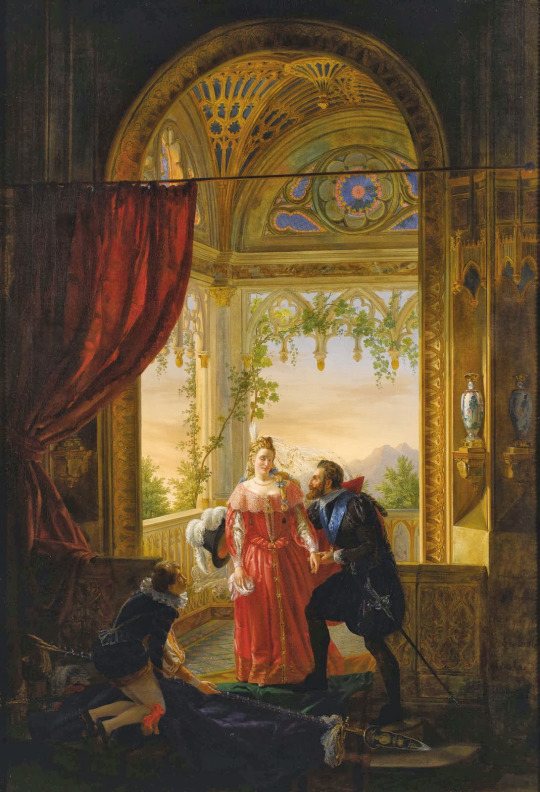
Henri IV with his Mistress by Louis-Nicolas Lemasle
#henri iv#art#louis nicolas lemasle#henry iv#king#france#french#henry of navarre#captured#flags#flag#standard#battle of coutras#troubadour#europe#european#history#diane d'andoins#countess of gramont#comtesse de gramont#architecture#countess de gramount#henry iii#navarre#henri iii#french religious wars#royal#huguenots#huguenot#royalty
73 notes
·
View notes
Text
Historical figures that have served as inspiration for the women in ASOIAF - George R.R. Martin interview
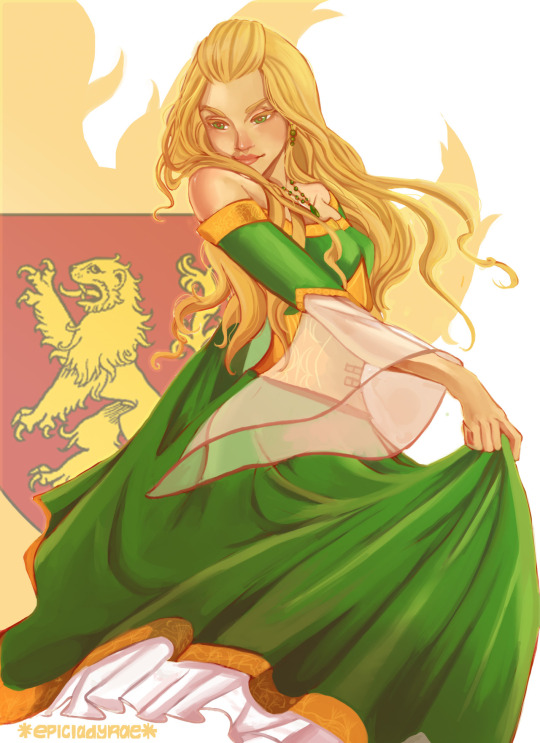
Interviewer: What women through history have inspired and helped you on your way to creating these female characters that we love?
George: There are some very interesting queens in both English and French history who have, at least partially, inspired the characters in Game of Thrones. Many people have observed that Game of Thrones is based, in part, on the Wars of the Roses and that is certainly true, although I don't do a one-for-one translation. If you go and say “This character is based on that character” you're gonna be partly right, but also partly wrong, because I like to mix and match and throw a few twists, making the characters my own. Certainly, the wife of Edward IV, Elizabeth Woodville, was one of the most interesting queens in English history. She was the mother of the princes in the tower and married secretly. She was a Lancastrian, but she married the Yorkist claimant secretly and that produced all sorts of trouble, and she was in the middle of all that stuff with Richard III. She was fascinating! On the other side, the Lancastrian queen, Margaret of Anjou: she was pretty amazing and definitely hardcore! She was married to the idiot king, Henry VI, and she basically had to command her side after some of the leading Lancastrian supporters were killed in the early parts of the war. If you go back a hundred years before, Isabella, the wife of king Edward II, the She-Wolf of France, she was a pretty amazing one too. She basically got rid of her husband, imprisoned him, and allegedly had him killed by having a hot poker thrust up his ass while he was in captivity and then she and her lover took over and ran the kingdom until her son Edward III rose up against his own mother and imprisoned her. All of this stuff, I play with it, but I can't claim to really have invented any of it. There are some things in history that are just as violent and twisted and bizarre and amazing as anything in my books.
- George R.R. Martin, Supanova Expo
#Cersei Lannister#Elizabeth Woodville#Margaret of Anjou#Isabella of France#Female Characters#Inspiration#George R.R. Martin#ValyrianScrolls#ASOIAF
152 notes
·
View notes
Note
How... hm, how to put this... how aware were rulers of regarding other nations in the medieval and early modern periods? Like, would the ruler of Portugal know who the Timurids were? Or what was going on in Muscovy at the time? Like, how far east and south did their knowledge go before it turned into "Here Be Dragons" legend and rumor? Did they know who the Mali and Songhai were?
The answer is that it depends, largely due to differing geographies and trade patterns and time periods. For example, the ruler of Portugal might well know who the Timurids were - if it was after Vasco de Gama's "discovery" of the Cape Route to the Indian Ocean, because it's just a quick jaunt up the Indian coast to get to the Persian Gulf.

I doubt the King of Portugal would have much to do with the Tsar of Russia, but Queen Mary and Queen Elizabeth I of England definitely did - because the English government had chartered the Muscovy Company in 1555, which ferried diplomatic exchanges between Ivan IV and Elizabeth I along with the huge cargo of wool for fur and fur for wool.

And certainly the monarchs of western and central Europe would have been familiar with the kingdoms of eastern Europe, because they were all fucking inbred relations of each other.
For example, Louis the Great was King of Hungary, Croatia, and Poland, but he was also of the House of Anjou and his brother was the Duke of Calabria who married to the Queen of Naples, who also was the Countess of Provence and the Princess of Achaea. - and after his brother was assassinated, Louis invaded Naples and claimed the title of King of Naples, Sicily, and Jerusalem!

Similarly, Henry III of France was elected King of Poland and Grand Duke of Lithuania in order to keep out the Hapsburgs, and Henry's mother was Catherine de Medici. So there was probably a lot of knowledge of different countries just from family letters...

As for Mali and Songhai, the Portuguese and the Dutch "traded" extensively with West Africa in the 15th-17th centuries. So they certainly would have traded with the Mali and then the Songhai Empires. But I doubt the Tsar of Russia would have known much about them, and so it goes...

114 notes
·
View notes
Text
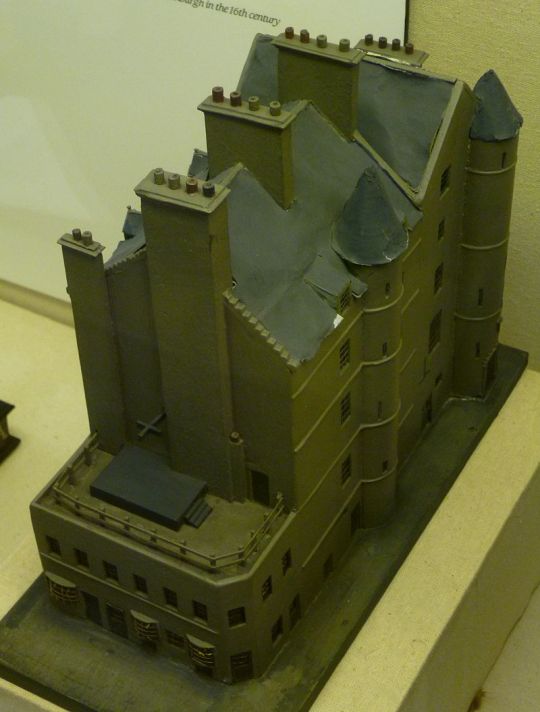
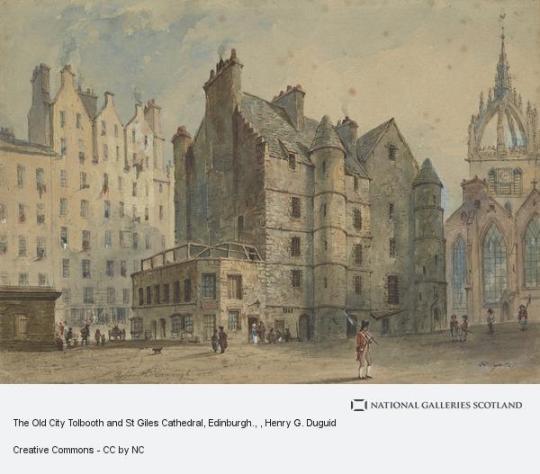
On October 16th 1516, Alexander Home, 3rd Lord Home and his brother William were executed in Edinburgh.
It's fair to say that those men who held the title Duke of Albany, have been involved in some of the most troublesome intrigue in our long history, the first one, a ruthless politician, was brother of King Robert III and was widely regarded as having caused the murder of his nephew, the Duke of Rothesay, this in turn forced the King to send the future James I to France in 1406, but was captured by pirates and "sold" to the English and held for 18 years, his ambitious uncle ruled as King in all but name until his death in 1420, when the next his son Murdoch, took over as Duke and regent, James I was eventually released in 1425 and Murdoch inevitably lost his head after being found guilty of treason.
Jump forward about 90 years and just after James IV died at Flodden, John Stewart, the latest Duke of Albany took over as Regent to James V was another of the boy Kings, I mentioned in my post earlier about James II.
Lord Home led his horsemen were part of the Scottish force that fought at Flodden, and was one of the few successful charges of that day, his men defeated the right wing of the English army, it's a pity other tactics went horribly wrong. As the battle progressed and the Scots were being slaughtered Lord Home fled the field, he did however stay on in Northumbria and attempted, unsuccessfully to to recapture the taken Scottish artillery some days later.
This story seems to be more about two men who disliked each other than anything else.
Although accepting Albany as Regent things started to go sour when the two had a meeting at Dumbarton Castle, where legend has it, Albany joked about Lord Home's small stature, quoting 'minuit praesentia famam' meaning 'the appearance doesn't live up to report.' Their relationship deteriorated and it seems Home tried to garner influence in England, possibly hoping to seek refuge there, sensing things were not going to end well with the new Regent.
In September 1515 Albany forcibly took Hume Castle, and ordered Home to meet him later that year at the Collegiate Church at Dunglass, where he was arrested and imprisoned at Edinburgh Castle. The keeper of the castle at the time was the Earl of Arran and Home's Brother in Law. Home persuaded Arran to escape with him and take up arms against Albany, they joined another rebel, the Earl of Angus in the Borders.
Moving North they attacked Glasgow capturing ammunition and throwing it down a well, they then headed east and to Dunbar, attacking the castle there and heading south again captured the Chief Herald, the Lord Lyon King of Arms at Coldstream holding him ransom for his mother who was a prisoner of one of Albany's lieutenants.
After offering a pardon, Albany invited Home and his brother William to Holyroodhouse, where he promptly arrested the pair, imprisoning then on the fortified island of Inchgarvie on The Firth of Forth.
Initially they were accused of the trumped charges of the murder of James IV at Flodden, then of failing to prevent English re-fortification at Norham Castle after the battle.
Finally he and William were charged with rebellion against Albany and beheaded, and their heads displayed on the gable of Edinburgh Tolbooth.
In the mid 1520's Albany was overthrown from the Scottish regency, and lived mainly in France until his death in 1536.
The pic is model of the Old Tolbooth exhibited in Edinburgh's Huntly House Museum. The execution platform can be seen projecting from the building. The second pic is a painting by Scottish artist Henry G. Duguid of the Tolbooth and St Giles.
16 notes
·
View notes
Text
CONFIRMED ATTENDEES TO THE CORONATION OF
♚♛ KING CHARLES III & QUEEN CAMILLA ♛♚
───────────── ⋆⋅☆⋅⋆ ─────────────
♔ ┆ Foreign Royalty
King Felipe & Queen Letizia 🇪🇸
King Philippe & Queen Mathilde and Princess Elisabeth, The Duchess of Brabant 🇧🇪
King Jigme Khesar & Queen Jetsun Pema 🇧🇹
Yang di-Pertuan Agong Abdullah & Raja Permaisuri Agong Tunku 🇲🇾
Kīngi Tūheitia & Makau Ariki Te Atawhai of the Māori
Grand Duke Henri & Grand Duchess Maria Teresa 🇱🇺
King Carl Gustaf and Crown Princess Victoria 🇸🇪
King Willem-Alexander & Queen Maxima, Princess Beatrix and Crown Princess Catharina-Amalia, The Princess of Orange 🇳🇱
Crown Prince Haakon & Crown Princess Mette-Marit 🇳🇴
Crown Prince Fumihito & Crown Princess Kiko 🇯🇵
Crown Prince Frederick & Crown Princess Mary 🇩🇰
Prince Albert & Princess Charlene 🇲🇨
King Vajiralongkorn & Queen Suthida 🇹🇭
King Abdullah II & Queen Rania 🇯🇴
King Tupou & Queen Nanasipau’u 🇹🇴
Hereditary Prince Alois & Hereditary Princess Sophie 🇱🇮
King Mswati III & Queen Sibonelo LaMbikiza 🇸🇿
Crown Prince Sheikh Mishal Al Ahmad Al-Jaber Al-Sabah 🇰🇼
Crown Prince Theyazin bin Haitham Al Said 🇴🇲
Emir Tamim bin Hamad Al Thani 🇶🇦
Princess Lalla Meryem 🇲🇦
Prince Turki bin Mohammed bin Fahd Minister of State 🇸🇦
Sheikh Mansour bin Zayed 🇦🇪
King Letsie III & Queen Masenate 🇱🇸
Sultan Hassanal Bolkiah 🇧🇳
King Hamad bin Isa Al Khalifa 🇧🇭
Asantehene Otumfuo Osei Tutu II & Lady Julia of the Ashanti
♔ ┆ Deposed Royalty & Distant Family Relations
Queen Anne-Marie, Crown Prince Pavlos & Crown Princess Mary Chantal 🇬🇷
Margrave Bernhard & Margravine Stephanie of Baden
Landgrave Donatus of Hesse
Prince Philipp & Princess Saskia of Hohenlohe - Langenburg
Margareta (Custodian of the Crown) and Prince Radu 🇷🇴
Crown Prince Alexander & Crown Princess Katherine 🇷🇸
Tsar Simeon & Tsaritsa Margarita 🇧🇬
Annoying Ginger from Montecito
♔ ┆ Governor-Generals of Commonwealth Realms
Governor-General David Hurley & Linda Hurley 🇦🇺
Governor-General Sir Rodney Williams & Lady Williams 🇦🇬
Governor-General Sir Cornelius A. Smith & Lady Smith 🇧🇸
Governor-General Dame Cindy Kiro & Richard Davies 🇳🇿
Governor-General Mary Simon & Whit Fraser 🇨🇦
Governor-General Sir Patrick Allen & Lady Allen 🇯🇲
Governor-General Dame Froyla Tzalam 🇧🇿
Governor-General Dame Cécile La Grenade 🇬🇩
King's Representative Sir Tom Marsters & Lady Tuaine Marsters 🇨🇰
Governor-General Sir David Vunagi & Lady Vunagi 🇸🇧
Governor-General Sir Bob Dadae 🇵🇬
Governor-General Dame Marcella Liburd 🇰🇳
Deputy Governor-General Hyleta Liburd of Nevis
Acting Governor-General Errol Charles 🇱🇨
Governor-General Dame Susan Dougan 🇻🇨
Governor-General Sir Tofiga Vaevalu Falani 🇹🇻
♔ ┆ Heads of Governments of Commonwealth Realms
Prime Minister Anthony Albanese & Jodie Haydon 🇦🇺
Prime Minister Justin Trudeau & Sophie Grégoire Trudeau 🇨🇦
Prime Minister Philip Davis 🇧🇸
Prime Minister Dickon Mitchell 🇬🇩
Prime Minister Chris Hipkins 🇳🇿
Prime Minister Terrance Drew 🇰🇳
Prime Minister Ralph Gonsalves 🇻🇨
♔ ┆ Governmental Representatives of Commonwealth Realms
Margaret Beazley, Governor of New South Wales 🇦🇺
Linda Dessau, Governor of Victoria 🇦🇺
Jeannette Young, Governor of Queensland 🇦🇺
Chris Dawson, Governor of Western Australia 🇦🇺
Frances Adamson, Governor of South Australia 🇦🇺
Barbara Baker, Governor of Tasmania 🇦🇺
Former Prime Minister Hubert Ingraham 🇧🇸
Former Prime Minister Perry Christie 🇧🇸
Michael Pintard, Leader of the Opposition 🇧🇸
Janice Charette, Clerk to the Privy Council of Canada and Secretary to the Cabinet 🇨🇦
High Commissioner Kisha Abba Grant 🇬🇩
High Commissioner Phil Goff 🇳🇿
Christopher Luxon, Leader of the Opposition 🇳🇿
Koni Iguan, Deputy Speaker of the National Parliament 🇵🇬
Justin Tkatchenko, Minister for Foreign Affairs 🇵🇬
Rainbo Paita, Minister for Finance and National Planning 🇵🇬
Taies Sansan, Secretary for the Department of Personnel Management 🇵🇬
Gisuwat Siniwin, former Member of the National Parliament 🇵🇬
Premier Mark Brantley of Nevis
High Commissioner Moses Kouni Mose 🇸🇧
Jeremiah Manele, Minister of Foreign Affairs and External Trade 🇸🇧
♔ ┆ Foreign Heads of States + Governments
President Andrzej Duda & First Lady Agata Kornhauser-Duda 🇵🇱
President Petr Pavel and First Lady Eva Pavlová 🇨🇿
President Ferdinand Marcos Jr. and First Lady Louise Araneta-Marcos 🇵🇭
President Katalin Novák & First Gentleman István Attila Veres 🇭🇺
President Guðni Th. Jóhannesson and First Lady Eliza Reid 🇮🇸
President Michael D. Higgins & First Lady Sabina Higgins and Leo Varadkar, Taoiseach 🇮🇪
President Herzog & First Lady Michal Herzog 🇮🇱
President Egils Levits & First Lady Andra Levite 🇱🇻
President Ali Bongo Ondimba & First Lady Sylvia Bongo Ondimba 🇬🇦
President Mario Abdo Benítez & First Lady Silvana López Moreira 🇵🇾
O le Ao o le Malo Tuimalealiʻifano Vaʻaletoʻa Sualauvi II & Masiofo Faʻamausili Leinafo 🇼🇸
President Paul Kagame & First Lady Jeannette Kagame 🇷🇼
President Wavel Ramkalawan, & First Lady Linda Ramkalawan 🇸🇨
President George Vella & First Lady Miriam Vella 🇲🇹
President Julius Maada Bio & First Lady Fatima Bio 🇸🇱
Hakainde Hichilema & First Lady Mutinta Hichilema 🇿🇲
President Sergio Mattarella 🇮🇹
President Ranil Wickremesinghe 🇱🇰
President Halimah Yacob 🇸🇬
President Faure Gnassingbé 🇹🇬
President Muhammadu Buhari 🇳🇬
President Filipe Nyusi 🇲🇿
President Frank-Walter Steinmeier 🇩🇪
President Vahagn Khachaturyan 🇦🇱
President Alar Karis 🇪🇪
President Sauli Niinistö 🇫🇮
President Emmanuel Macron 🇫🇷
President Luiz Inácio Lula da Silva 🇧🇷
President Alexander Van der Bellen 🇦🇹
President Vahagn Khachaturyan 🇦🇲
President Salome Zourabichvili 🇬🇪
President Katerina Sakellaropoulou 🇬🇷
President Abdul Latif Rashid 🇮🇶
President Vjosa Osmani 🇽🇰
President George Weah 🇱🇷
President Gitanas Nausėda 🇱🇹
President Mohamed Ould Ghazouani 🇲🇷
President Maia Sandu 🇲🇩
President Stevo Pendarovski 🇲🇰
President Lazarus McCarthy Chakwera 🇲🇼
President Ibrahim Mohamed Solih 🇲🇻
President William Ruto 🇰🇪
President Irfaan Ali 🇬🇾
President Wiliame Katonivere 🇫🇯
President Paul Biya 🇨🇲
President Nikos Christodoulides 🇨🇾
President Mohamed Bazoum 🇳🇪
President Marcelo Rebelo de Sousa 🇵🇹
President Klaus Iohannis 🇷🇴
President Macky Sall 🇸🇳
President Zuzana Čaputová 🇸🇰
President Nataša Pirc Musar 🇸🇮
President Võ Văn Thưởng 🇻🇳
Emmerson Mnangagwa 🇿🇼
Chairwoman of the Council of Ministers Borjana Krišto 🇧🇦
Prime Minister Sheikh Hasina 🇧🇩
Prime Minister Han Duck-soo 🇰🇷
Prime Minister Shehbaz Sharif 🇵🇰
President Alain Berset of the Swiss Confederation & Muriel Zeender 🇨🇭
Prime Minister Galab Donev 🇧🇬
♔ ┆ Governmental Representatives
First Lady Jill Biden & Finnegan Biden and John Kerry, Special Presidential Envoy for Climate 🇺🇸
First Lady Olena Zelenska 🇺🇦
First Lady Verónica Alcocer 🇨🇴
Vice President Jagdeep Dhankar 🇮🇳
Vice President Fuat Oktay 🇹🇷
Vice President Tiémoko Meyliet Koné 🇨🇮
Vice President Han Zeng 🇨🇳
Vice President Mohammed B.S Jallow 🇬🇲
Sahiba Gafarova, Speaker of the National Assembly 🇦🇿
Christophe Mboso N'Kodia Pwanga, President of the National Assembly 🇨🇩
Arnoldo André, Minister of Foreign Affairs 🇨🇷
Naledi Pandor, Minister of International Relations and Cooperation 🇿🇦
Nabil Ammar, Minister of Foreign Affairs 🇹🇳
Narayan Prakash Saud, Minister of Foreign Affairs 🇳🇵
Gustavo Manrique, Foreign Minister 🇪🇨
Ahmed Attaf, Foreign Minister 🇩🇿
Frederick Shava, Foreign Minister & Mthuli Ncube, Finance Minister 🇿🇼
Cardinal Pietro Parolin, Cardinal Secretary of State 🇻🇦
Ambassador José Alberto Briz Gutiérrez 🇬🇹
♔ ┆ Representatives from International Organizations
Amina Jane Mohammed, Deputy Secretary General 🇺🇳
Ursula von der Leyen, President of EU Commission 🇪🇺
Charles Michel, EU Council President 🇪🇺
Roberta Metsola, President of the European Parliament 🇪🇺
#coronation 2023 guest list#coronation 23#coronation guests#coronation guest list#british royals#british royalty#king charles#king charles iii#charles iii#queen camilla#queen consort camilla
238 notes
·
View notes
Text
I want to speak about a linguistic confusion that is driving me nuts for quite some times - and it is related to the Despicable Me world. To the... Minions.
Because in French, the Minions' name was kept as Minion, but with a French pronunciation, making it "Mignons" - and many, MANY people do write and interpret it as a result as "Mignons".
What is the problem you ask, since Minion and Mignon are pronounced exactly the same? Simple: that's a false translation. Minion in the English sense, as you know, is used to designate the lower servant of a villain ; they are called the Minions because they are the villain's minions. But "mignon" in French is the adjective "cute". So in French everybody calls the Minions, "The Cuties".
Even worst is how it seems to be a deliberate false translation, because it isn't like the word "minion" causes problem for French people. An entire species of villain underlings called the "Minions" was already translated in French before: the Minions from the Overlord video games, which were translated in French as "Larbins", an accurate translation of "minions" as "servants". So whoever did the French translation of the Despicable Me movies decided to deliberately not change the name to play on its similarity with the French "cute", but thus created a big cultural confusion.
However you know what is EVEN WORSE? "Mignon" can be used as a name to designate male underlings... But in one very specific context which is definitively not what the Despicable Me movies intend (except if you are into weird yaoi). King Henri III was very famous for his "mignons"... A term here to be translated as "homosexual favorites".
Okay to be fair the term was originally a bit more neutral and designated the most trusted and beloved male servants of a king, later extended to any male favorite of a king... But in France, Henri III's very "effeminate" rule (and already before, Henri II's habit of allowing his mignons to sleep in his own bed as a mark of absolute trust and friendship) forever associated the term with the idea of the homosexual lover of a nobleman.
So yeah every time people refer to the Minions as Gru's Cuties... I can't help but think about whatever they do in the bedroom.
20 notes
·
View notes